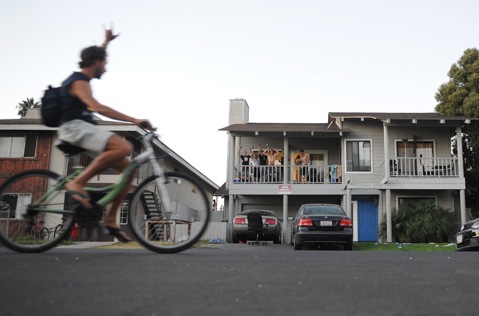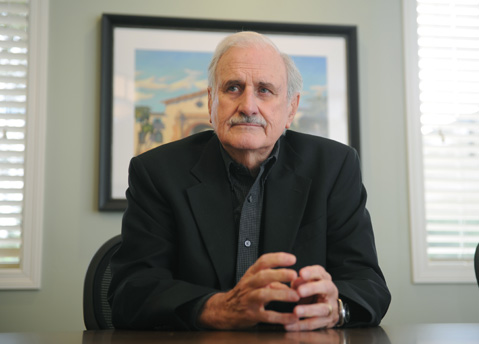Isla Vista’s Blueprint for Change?
Report Details Potential Cures for Town's Many Ills

A highly anticipated report that dissects the intricacies of Isla Vista — a pocket of unincorporated land that has mushroomed into a booming urban area populated with 23,000 people — was formally unveiled this week. Following May’s mass murder, UCSB’s Board of Trustees quickly set up a fund to support an extensive study of the town, and the result is 20 pages of recommendations for the university that include reinforcing relations with stakeholders to better publicizing crime data to reducing over-occupancy to enforcing existing ordinances.
Leading the charge was trustee and professor emeritus Duncan Mellichamp, who, during one of the numerous meetings in the days after the killings, asked the pointed question: How are we going to deal with Isla Vista? Mellichamp, who retired from UCSB’s Chemical Engineering department in 2003 and continues to guest lecture, soon found himself the chair of an 18-member independent group, which spent hundreds of hours, more than 125 meetings, and four months drafting “A Call for Action.”

Mellichamp arrived at UCSB in 1966, when large parcels in Isla Vista were increasingly inhabited by students looking for cheap apartments. The late ’60s proved to be the calm before the storm as the infamous antiwar burning of the Bank of America building took place on February 25, 1970. That act of civil disobedience looks relatively purposeful compared to recent years that have cast Isla Vista as a violent place — infected with gang rapes, riots, civil unrest, and mass murder — that attracts criminal outsiders. And with such densely populated units — three or four beds packed into garages — it’s easy to remain inconspicuous.
The trouble with Isla Vista has long been the fact that it is an urban environment tucked into the county’s 3rd District, governed by mechanisms more appropriate for rural regions. There have been nine past reports on the area, raising the question: Why will this time around be any different? More than four decades ago, a UC-led study known as the Trow Report stated, “Isla Vista is deeply scarred by the events of the past. Without indigenous institutions, the community can continue to be torn apart.” It continued, “ … the University can no longer ignore, if it ever could, the conditions under which the bulk of its students live and spend the greater part of their time while at the University.” Some of the rhetoric released this week is almost identical.
One new element is the emphasis to bring a representative body to Isla Vista, which has been the topic of two town hall forums held in the past few months. The governing mechanism that seems to be gaining the most traction is one called the Community Services District, which would be implemented by the State Legislature. A five-member board — two seats could be appointed by the university and Goleta, and three spots would be elected — would have the power to issue bonds or taxes. “I’ve always held that it’s only when residents have responsibility will they pay attention to the rules,” said longtime I.V. activist Carmen Lodise. But long-term residents have vocally opposed such ideas, arguing this approach would allow the transient student population to vote in taxes and leave long-term property owners with the bill.
The rate to which universities hold their students accountable for behavior off campus is also outlined in the report and seeks to eliminate the distinction between on-campus and off-campus infractions. “If you want to be associated with one of the top universities in the world,” Mellichamp explained, “we have certain requirements … things that are not placed on normal citizens.” The report recommends that UCSB students be disciplined by the school — in addition to the criminal system — for any acts that violate the law. Rather than trekking to court downtown to face a charge and pay a fine, trustees endorse the idea of a restorative justice court to handle nonviolent crimes such as peeing in public. This would be set up by the District Attorney’s Office, and a special prosecutor would oversee the efforts.
The list of remedies goes on. Another idea is for the university to fund a person to inspect housing to see if owners are breaking any of the zoning codes on the books. Another is to encourage Santa Barbara City College to create housing near its campus as several thousand of its students live in Isla Vista and commute to the Mesa. A third is to expand the Community Housing Office so that university employees would act as property managers to housing units to increase the standard of the rental market.
A chancellor’s coordinating committee has started to review the report and will meet biweekly moving forward. Many Isla Vista supporters emphasize its strong sense of community and see the moment as an opportune time to implement real change. “I’m an experimentalist,” Mellichamp added. “I believe in running experiments and seeing what happens.”



